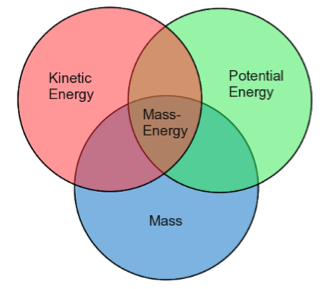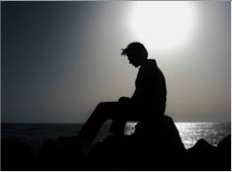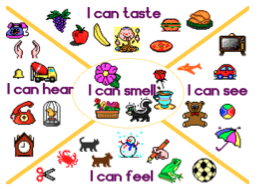Reading: Dooyeweerd's Fifteen Aspects of Reality
Herman Dooyeweerd
The method he taught to help us see the unified whole of reality
Aspect 1
The
Quantitative: Everything that exists has a number that can be
associated with it. This is a part of the reality in which we live.
An example would be this sentence:
"This 1 slide is about the first of the 15 aspects, and has a certain number of words."
Aspect 2
The second aspect of reality is the Spatial
A
major concern for most everyone is the use of space. From our cupboards
to the city bus we want to ride on, space is a critical consideration.
A way to express something of this is to say:
"This slide is laid out in rectangular areas."
Aspect 3
The third aspect of reality is that of the Kinematic
This
has to do with movement. So we are now moving higher on the scale of
aspects since not everything moves in our common perceptions of them.
This means that there are entities in reality which do not participate
in this and the following aspects since they only have the first two
aspects.
An example sentence might read:
"My eyes move across the screen as I read this. But the screen is not moving unless it is acted upon."
Aspect 4
The fourth aspect is that of the physical.
This aspect has to do with the energy and mass of a specific object.
A sentence that could be used here is:
"There is light being emitted from the screen in front of me."

Aspect 5
Aspect
five moves us a bit higher on the scale as we add life, so that now we
are talking about organisms that have all the previous aspects and are
living. The technical term here is that this is the biotic/organic aspect. The study of biology focuses on this aspect.
The biotic/organism aspect
Aspect 6
Aspect six moves us up a step to the level of the sensing/ feeling /psychic dimension of existence.
A sentence containing this idea would be, "I can see this slide with my own eyes."
 Below we see
a diagram of a person’s five senses.
Below we see
a diagram of a person’s five senses.

By using one of them, sight, we can also see this photo to the right and get a “feeling” of what the person in the picture is feeling.
Aspect 7
The
seventh aspect in Dooyeweerd’s system of describing reality is the
analytical level. Here we come to the level where we use our mind to
ponder what our senses are telling us.
A sentence might read, "I can see the words on this slide and think about them."
Aspect 8
The
eighth of Dooyeweerd’s system of aspects is the formative. That means
that with various items, we can think about what we want to make, and
then do it.
The example of a sentence would be, "You can construct an opinion about what you have just read!"

An architect dreams of what a house might look like, he draws up plans for the house, then he and others get together to build the house. All part of the formative aspect of reality. See if you can name how all the previous aspects are a part of this as well.
Aspect 9
The
ninth aspect now carries us beyond the structural aspect to the lingual
aspect. Here we are investigating the aspects of language and words,
and how words convey meaning (or lack thereof.)
A sentence might read, "Of course you understand what I am talking about!! Don’t you?"
Aspect 10
Aspect
ten introduces a new level of complexity. So far we have focused only
on individuals, in the tenth we focus on the social aspect.
A sentence might read, "You have a role to play in society. You need to fulfill it to be a leader."
Aspect 11
The
eleventh aspect has to do with economics. Here we focus on the way that
monetary value comes to play in our lives. What is of value to others?
To me?
This aspect deals with the issue of frugality and the management of various resources.
Aspect 12
Now
we arrive at a level of some abstraction because here things can be a
matter of opinion in ways that could not be thought of before. So we
arrive at the aesthetic level of reality.
A sentence with this aspect would be,
"I love the color of that flower arrangement."
"You do? I don’t like dandelions at all!"
Aspect 13
Aspect
thirteen goes beyond the aesthetic level to the juridical aspect. In
the aesthetic aspect, we have opinions, but in the juridical we have
social laws which are enacted to require us to think and act certain
ways.
A sentence might be, "How did you do justice to your responsibility to your neighbor?"
Aspect 14
The
fourteenth of Dooyeweerd’s aspects is one which asks us to describe our
attitudes. It is called the ethical/attitudinal aspect. This aspect has
to do with the idea of giving of oneself for others.
A sentence involving this aspect could read, "Did you go beyond what was required or not?"
Aspect 15
The
final aspect that we find in reality is that of the pistic/faith
aspect. We come finally to the questions of faith and believing.
A sentence with this in might read, "I believe in what I am writing on this page, and I believe it's important."
So,
those are the fifteen aspects of reality as Herman Dooyeweerd developed
them. As we think about them, we find that there is reason to focus on
each of these individually, but we do not do justice to the creation if
we reduce a person, for example, to merely a number, or if we elevate a
number to the level of ethics.
I hope that this admittedly
sketchy introduction to Herman Dooyeweerd’s thought will encourage you
to read more about his philosophy and to attempt to think Christianly
about the creation in which we live.
